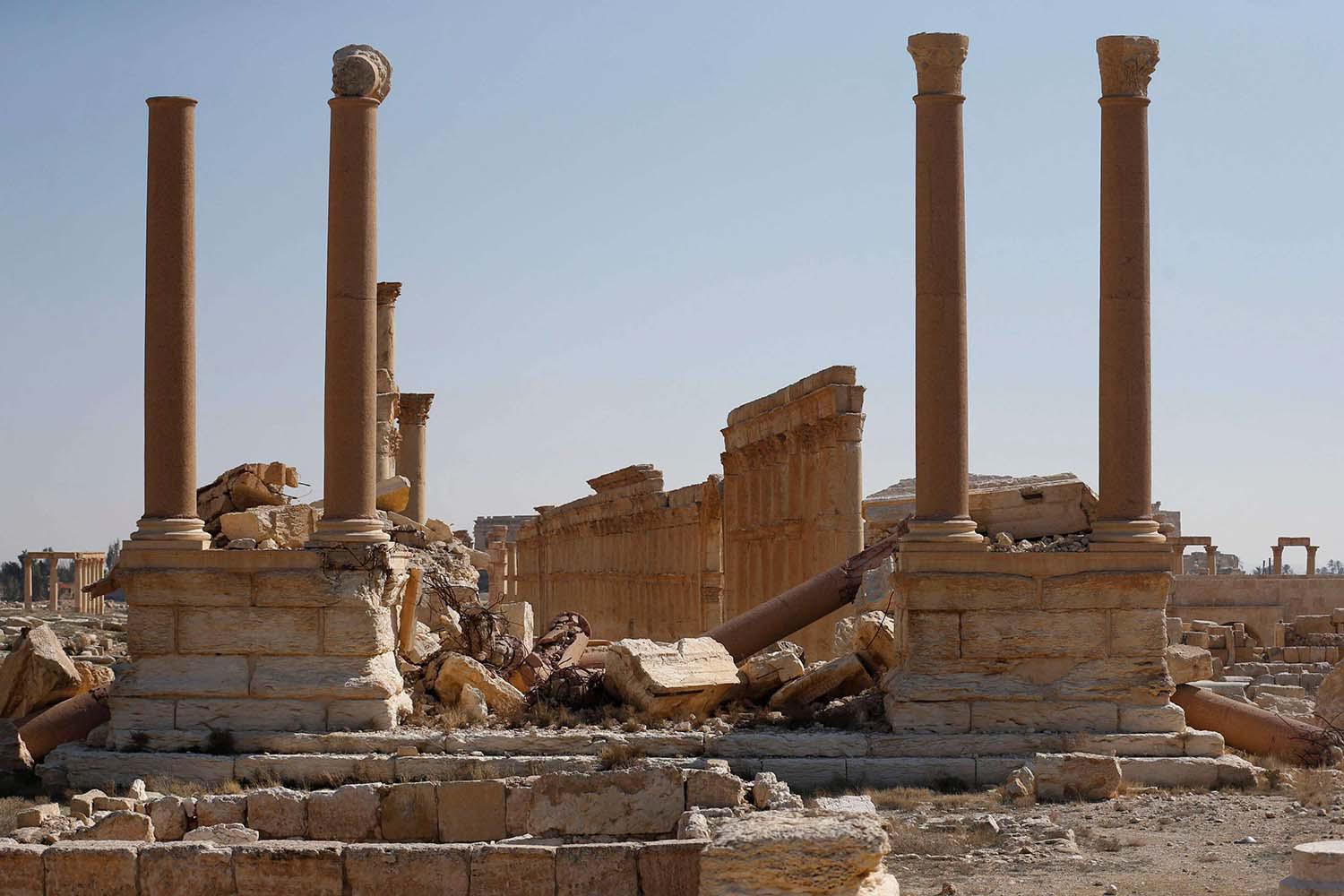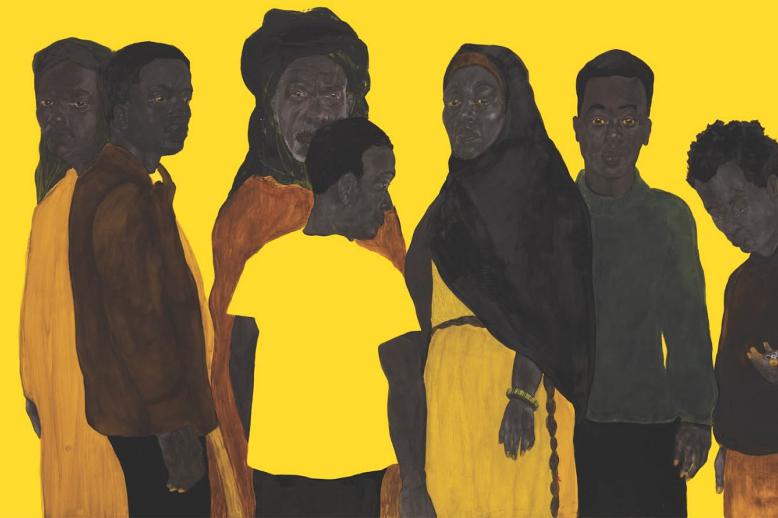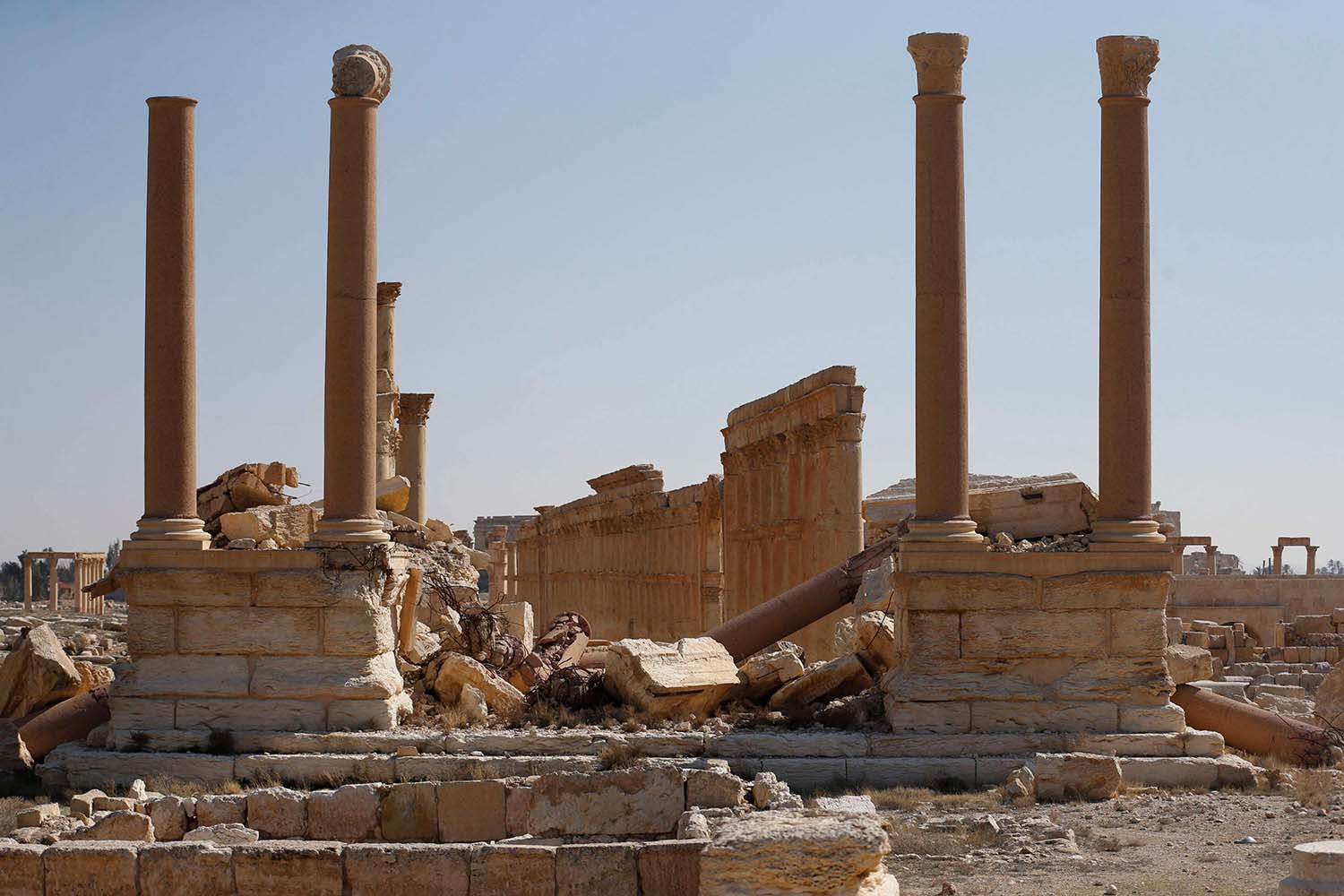War inflicts irreversible losses on Syrian heritage
PALMYRA - A decade of war has not only destroyed Syria’s present and poisoned its future, it has damaged beyond repair some of its fabled past.
Syria was an archaeologist’s paradise, a world heritage home to some of the oldest and best-preserved jewels of ancient civilisations.
The conflict that erupted in 2011 is arguably the worst of the 21st century so far on a humanitarian level, but the wanton destruction of heritage was possibly the worst in generations.
In a few years, archaeological sites were damaged, museums were looted and old city centres were levelled.
Standing in front of a restored artefact in the Palmyra museum he ran for 20 years, Khalil al-Hariri remembers the trauma of having to flee the desert city and its treasures as they fell into the hands of ISIS.
“I have lived many difficult days. We were besieged several times in the museum” , he said, recounting how he and his team stayed behind as late as possible to ferry artefacts to safety.
“But the most difficult day of my life was the day I returned to Palmyra and saw the broken antiquities and the museum in shambles”, said Hariri, now 60 years old.
“They broke and smashed all the faces of statues that remained in the museum and which we could not save. Some of them can be restored, but others have completely crumbled”.
Palmyra is a majestic ancient city whose influence peaked towards the end of the Roman empire and was famously ruled by Queen Zenobia in the 3rd century.
— Blowing up history —
Its imposing kilometre-long colonnade is unique and one of Syria’s most recognisable landmarks.
When ISIS extremists hurtled into Palmyra in May 2015 to expand the “caliphate” they had proclaimed over parts of Syria and Iraq a year earlier, the outcry was global.
The contrast offered by the splendour and prowess of Palmyrene architecture as a backdrop to the barbarity of dishevelled gun-toting jihadists captured the world’s imagination.
The site became a stage for public executions and other gruesome crimes, some of which were pictured and distributed in ISIS propaganda.
The headless body of chief archaeologist Khaled al-Asaad was also displayed there by ISIS henchmen who had tortured him to get him to reveal where the site’s artefacts had been transferred.
Bent on their enterprise of cultural genocide, the terrorists rigged Palmyra’s famed shrine of Baal Shamin and blew it up.
They also destroyed the Temple of Bel, blew up the Arch of Triumph, looted what they could from the museum and defaced the statues and sarcophagi that were too large to remove.
The sacking of the ancient city dubbed “The Venice of the Sands” drew comparisons with the destruction by Afghanistan’s Taliban of the Bamiyan Buddhas in 2001.
By the time government forces retook control of Palmyra in 2017, it had been irreversibly damaged.
– Irretrievable losses –
Palmyra was just one of the irretrievable losses inflicted on Syria’s heritage during a war that did not spare a single of the country’s regions.
“In two words, it’s a cultural apocalypse,” said Justin Marozzi, an author and historian who has written extensively on the region and its heritage.
The patrimonial destruction unleashed on Syria in the previous decade harks back to another age, when the Mongol empire founded by Gengis Khan wreaked carnage far and wide.
“When it comes to Syria and the Middle East in particular, I can’t help thinking immediately of Timur, or Tamerlane, who unleashed hell here in 1400,” said Marozzi, author of “Islamic Empires: Fifteen Cities that Define a Civilisation.”
The reference to the Mongol conqueror is inevitable when pondering the fate of Aleppo, Syria’s economic hub before the war and once home to one of the world’s best-preserved old cities.
Tamerlane put the city to the sword six centuries ago, but the devastation wrought on Aleppo in the past decade was not the work of a foreign invader.
Maamoun Abdel Karim was Syria’s antiquities chief when the worst of the destruction occurred, from 2012 to 2016.
“Over the past two millennia of Syrian history, nothing worse has happened than what did during the war,” he said.
“Complete and utter destruction. We’re not talking just about an earthquake in some place or a fire in another — or even war in one city — but destruction across the whole of Syria,” he said.
– Disfigured landscape –
Before the war, the northern city of Aleppo — considered to be one of the world’s longest continuously inhabited — boasted markets, mosques, caravanserais and public baths.
But the brutal siege imposed on rebels left it disfigured.
The government, which from 2015 benefitted from Russia’s military might, relied heavily on air power to claw back the territory.
“I can’t forget the day the minaret of the Umayyad mosque in Aleppo fell, or the day the fire ripped through the city’s ancient markets,” Abdel Karim said.
Other buildings which, like the 11th century minaret, had survived Tamerlane to stand for centuries were lost forever.
“Around 10 percent of Syria’s antiquities were damaged, and that’s high for a country with so many relics and historical sites,” the former antiquities chief said.
A report published last year by the Gerda Henkel Foundation and the Paris-based Syrian Society for the Protection of Antiquities said more than 40,000 artefacts had been looted from museums and archeological sites since the start of the war.
The trafficking of “conflict antiquities” has generated millions of dollars for ISIS, smaller rebel groups, state forces as well as more loosely-organised smuggling networks and individuals.
ISIS had a special department regulating excavations of archaeological sites on its territory, suggesting the profit to be made was significant, although it was never accurately quantified.
The chaos that engulfed Syria at the peak of the war allowed the more moveable pieces — such as coins, statuettes and mosaic fragments — to be scattered worldwide through the antiquities black market.
While some efforts have been undertaken to stem the illicit trade, and even in some cases to start repatriating stolen artefacts to Syria and Iraq, the damage done is huge.
– World tragedy –
The economic stakes are also huge for Syria’s future. The country’s heritage wealth was the key attraction of a tourism industry that had remained stunted but has massive potential.
Syria has six sites on the UNESCO elite list of world heritage and all of them sustained some level of damage in the war.
Besides Palmyra and Aleppo, the ancient cities of Damascus and Bosra also suffered. The spectacular Krak des Chevaliers crusader castle was also caught in the fighting, as were a group of old villages near the Turkish border known as “the dead cities.”
Other major heritage landmarks sustained severe destruction, such as the site of Apamea, an ancient Roman-era city on the Orontes river known for a colonnade that ran even longer than Palmyra’s.
At the height of its glory, Palmyra was a symbol of a pluralistic civilisation, a commercial hub on the Silk Road that was a cultural crossroads.
Its architecture was a blend of influences from ancient Rome and Greece, Persia and Central Asia.
What was destroyed during the war in Palmyra, and by extension in the whole of Syria, is evidence of a multicultural past, a certain ideal of civilisation.
“All of us should care about the destruction of Syria’s heritage because, as well as being Syrian and Arab, these ancient sites and cities and monuments form part of our common cultural patrimony,” Marozzi said.
“Places like Palmyra have a universal significance and value. They are part of our world civilisation, they are milestones in our history as humans and so anything that damages them is a wound for all humanity.”





